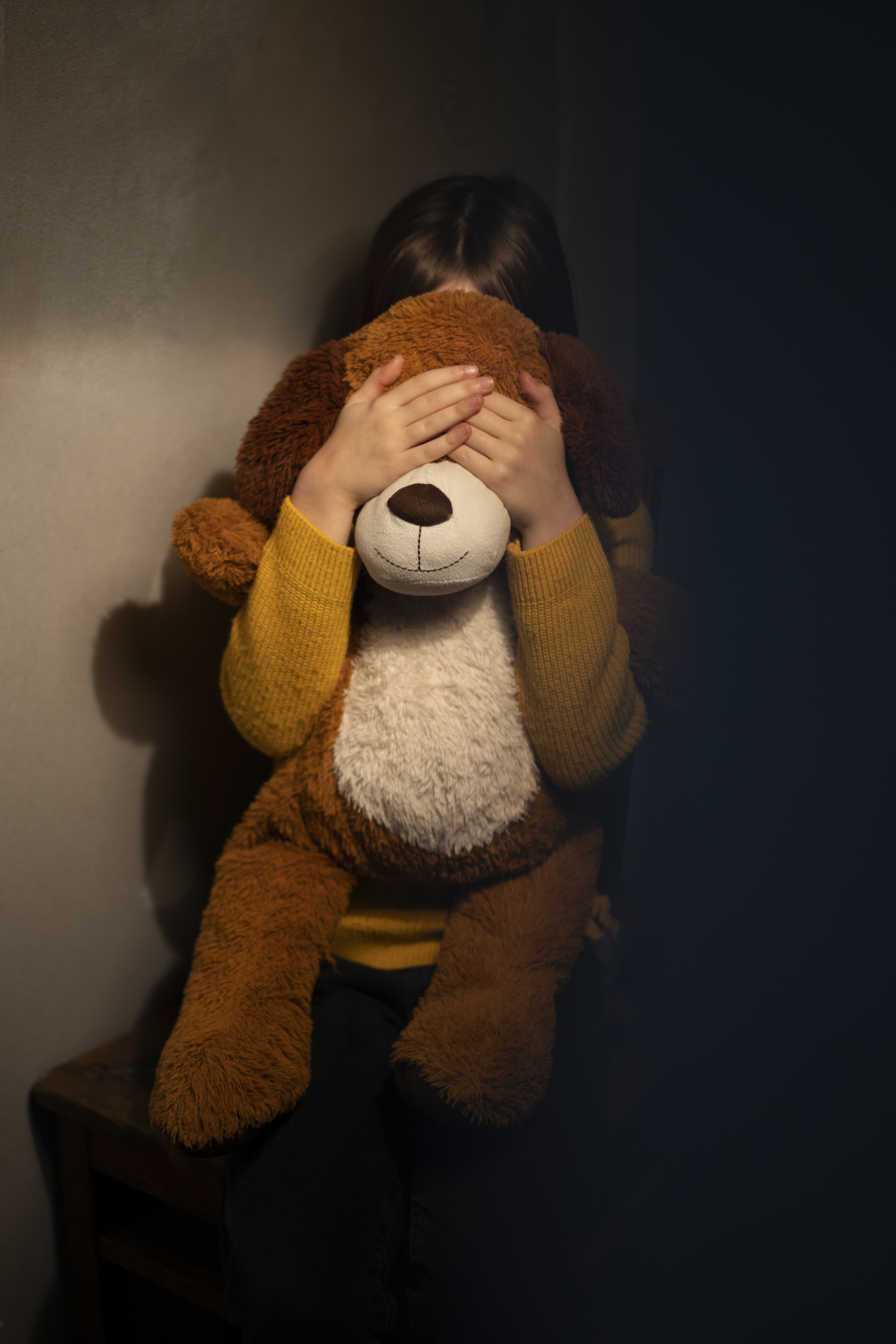RESEARCH
Articles
common.imageLoadError
ANOREXIA
By Lolita Yambaeva Papacosta | May 10, 2020 | Categories: ArticlesANOREXIA. SOME SOBERING STATISTICS:
33-50% of patients with anorexia also suffer from an affective disorder such as depression. About half of people with anorexia also suffer from anxiety disorders, including obsessive-compulsive disorder and social phobia. 20% (20 out of 100) of those who develop anorexia die from the direct consequences of this disease. Half of these deaths are suicides. About 5% (5 out of 100) of people with anorexia will die within 10 years of the onset of the disease. 25% of people with anorexia are male. At the same time, men who develop anorexia have a higher risk of death, particularly because they are diagnosed late, as many people believe that men are not prone to eating disorders. These figures indicate that anorexia is the deadliest of mental illnesses. Behind these statistics are the lives of real people whose lives were cut short by the struggle for thinness. If you suspect you have an eating disorder, please seek help from a psychologist.
common.imageLoadError
WORKING FROM HOME. HOW TO STAY PRODUCTIVE.
By Lolita Yambaeva Papacosta | April 16, 2020 | Categories: ArticlesWORKING FROM HOME. HOW TO STAY PRODUCTIVE.
During the coronavirus quarantine, many companies switched their employees to working from home. Of course, working from home has many advantages: saving time and money on commuting and preparation, less risk of catching an infection, the ability to regulate your workday, and the opportunity to work without being distracted by chatting with colleagues. However, many people face procrastination and lack of motivation. How can you overcome laziness and motivate yourself to work at full capacity?
By sticking to a daily routine, we maintain a sense of stability and order during isolation. This helps reduce anxiety caused by the uncertainty of the situation we are all in now.
It is very important to create and follow a certain schedule. Wake up at the same time every day... Morning rituals are especially important, as we set our mood for the whole day in the morning: make your bed, wash or shower, brush your teeth, comb your hair, do a little exercise, have breakfast, get dressed—these simple actions discipline you, set you up for an active start to the day, and as a result, your productivity increases for the whole day.
No matter how tempting it is to spend the whole day in pajamas, I do not recommend it. Working from home is relaxing. It's hard to feel collected and energetic in pajamas. Research shows that our clothes affect not only how others perceive us, but also our thinking processes and productivity. You don't have to wear a business suit or pencil skirt, but choose something comfortable that also puts you in a working mood.
One of the advantages of working from home is that we don't have to spend time commuting. However, this does not mean you can start working earlier or get up later. The extra time in the morning can be used to do a morning workout, yoga, or breathing exercises. Something you've long wanted to add to your morning routine but never found the time for.
Decide for yourself what hours of the day you will work and make it a rule to start working at the same time every day. Over time, this should become a habit. Keeping working hours will help avoid procrastination and unnecessary distractions.
Over a cup of morning tea or coffee, make a list of tasks for the day. You can divide them into two categories: work tasks and personal matters.
Each time you complete a task, cross it off the list. This simple action triggers the reward system in our brain, releasing the 'happiness hormone' dopamine. Its release improves mood and increases motivation. The desire to get another dopamine reward stimulates us to complete more tasks.
If you have many different tasks and no clear deadlines for their completion, you should indicate next to each task how much time you plan to devote to it per day. Before starting each task, set a timer for the required time and get to work. Only when the timer goes off can you take a break and switch tasks....
common.imageLoadError
SOCIAL FACTORS IN UNDERSTANDING AND TREATING PSYCHOSIS
By Lolita Yambaeva Papacosta | October 27, 2019 | Categories: ArticlesSocial factors in understanding and treating psychosis
Psychotic disorders. In the last decade, alternative views on psychotic disorders have gained popularity. Researchers are beginning to question the assumptions of the biomedical (organic) model of psychosis and criticize the effectiveness of psycho-pharmaceutical treatment. Some question the effectiveness of such treatment, considering side effects such as akathisia, while others insist on the need to understand psychosis from a first-person perspective, that is, how the patient experiences it.
Research has noted the positive effect of physical activity, sports, and art therapy in recovering from psychosis. This should be taken into account, as one of the common side effects of antipsychotic medications is weight gain, which in turn leads to cardiovascular problems.
Although practice shows how important social support and communication are for recovery from psychosis, there is very little research on the influence of sociocultural factors on psychosis. Various alternative approaches, such as 'Open Dialogue', have shown significant effectiveness in reducing hospitalizations and the duration of untreated psychosis in patients with their first psychotic episode. Research conducted by Norwegian and American scientists showed that such an integrated approach to treating psychotic disorders, which focuses on psychosocial factors with minimal use of neuroleptics, works equally effectively or even better than an approach that only uses neuroleptics.
Many assumptions of the organic approach, which focuses only on the patient, are refuted. Research results link psychotic episodes with psychological factors, such as past traumatic experiences, especially childhood trauma, and sociocultural factors, such as victimization from violent crimes and social problems (e.g., poverty, unemployment, etc.).
Cooper, R. E., Laxhman, N., Crellin, N., Moncrieff, J., & Priebe, S. (2019). Psychosocial interventions for people with schizophrenia or psychosis on minimal or no antipsychotic medication: A systematic review. Schizophrenia Research. doi: 10.1016/j.schres.2019.05.020
Hansen, H., Stige, S. H., Davidson, L., Loberg, E., & Veseth, M. (2019). 'Needing different things from different people' – a qualitative exploration of recovery in first episode psychosis. Social Work in Mental Health. doi: 10.1080/15332985.2019.1679324
Lehtinen, V. (2000). Two-year outcome in first-episode psychosis treated according to an integrated model. Is immediate neuroleptisation always needed? European Psychiatry, 15(5), 312–320. doi: 10.1016/s0924-9338(00)00400-4
common.imageLoadError
LOVING YOUR BODY
By Lolita Yambaeva Papacosta | October 2, 2019 | Categories: ArticlesLOVING YOUR BODY
Healthy body attitude. Body gratitude. Look in the mirror, what do you see? Are you satisfied with your body? Many people tend to critically examine their reflection in the mirror, finding various flaws. Some consider themselves not slim enough, while others think they are too thin. Some don't like their nose or the shape of their ears. 'If only I could add a little here, add a bit there, tighten this up...' If you find it difficult to develop a healthy, positive attitude towards your body, you are not alone.
Most women are dissatisfied with their appearance, with their dissatisfaction most often concerning weight, figure, breasts, hips, buttocks, and facial features. Although men are not as strongly affected by dissatisfaction with their appearance as women, they are not immune to it either. Men express dissatisfaction with their height, muscle mass, or thinning hair.
Meanwhile, mass media and social networks exacerbate this trend by promoting the cult of the 'perfect body'. This leads many women to perceive their own bodies through the prism of comparison with established beauty standards. Given that the images of role models looking at us from screens are often significantly modified with Photoshop, and sometimes with plastic surgery, this comparison does not benefit our self-perception, leads to dissatisfaction with our appearance, and results in a painful desire to achieve the ideal, sometimes even at the expense of our health.
According to research, negative body perception is associated with low self-esteem, social isolation, depression, eating disorders (anorexia, overeating, bulimia, etc.), and suicidal behavior.
The observed increase in psychological problems and cases of eating disorders among the population has given rise to the body positivity movement. Self-acceptance, love for one's body — these are central concepts in body positivity ideology. Body positivity is about accepting your body as it is, including all the changes that happen to it due to various factors such as pregnancy, childbirth, age, our personal preferences, and lifestyle. It seems like a wonderful movement, however, as with many mass movements, there are extremes and pitfalls.
The social body positivity movement has received serious media coverage in the last decade. Many leading brands and publications have not missed the opportunity to use this trend for their benefit. Remember Dove's 'Real Beauty' campaign, where the message of all commercials and billboards was that women often have a negative image of their appearance and it's very bad that they feel this way. However, in the advertising campaign, women's self-perception is presented outside the context of each participant's individual experience and life situation. It turned out to be a gentle, passive-aggressive condemnation of women who allow themselves to think poorly of their bodies.
One of the problems with body positivity is that this movement again focuses attention on external appearance. Our brain is wired in such a way that denying something doesn't help us get rid of what we deny or forbid. Thus, denying evaluative attitudes towards appearance doesn't distance us from the evaluative approach to appearance. On the contrary, it can intensify it, leading us to other extremes and creating new problems:
I think a healthier approach would be to replace body positivity with gratitude to one's body. Remember, what is our body given to us for, what functions does it perform? After all, the body is not just a frame for clothes, not just an avatar that is our external representation to the world.
Surely anyone who has experienced a serious illness will agree with me that how you feel in your body, whether you are comfortable in it, is much more important than external appearance, and here what matters are not external factors such as size, shape, skin color, presence or absence of scars, stretch marks, but health status, your ability to manage your body as it is (even with one arm or leg), and use this magnificent tool. After all, the body, among other things, is also a source of pleasure, it allows us to enjoy the beauty of sea sunsets, favorite music, distinguish the variety of tastes and aromas, experience the tenderness of touch and the bliss of orgasm. It's for all this that we should love our body....

WHAT TO DO WHEN YOU'RE LAZY?
By Lolita Yambaeva Papacosta | September 20, 2019 | Categories: ArticlesWHAT TO DO WHEN YOU'RE LAZY?
Unmade bed, uncut lawn in the garden, unfixed car problems, unsorted papers on the desk — is it really such a catastrophic lack of time to solve these household tasks, or is it just laziness?
Laziness is stagnation, the opposite of productivity. So if we want success and prosperity, we need to get rid of it urgently. That's what we'll do today.
Good luck!

LEARNED HELPLESSNESS
By Lolita Yambaeva Papacosta | December 4, 2019 | Categories: ArticlesLEARNED HELPLESSNESS
Some time ago in the comments to one of the posts on Facebook, there was a discussion about why women in abusive relationships often don't see a way out or can't use opportunities to exit these relationships. This kind of argument arises quite often, people who have never been in such relationships themselves wonder what prevents them from changing their lives, standing up for themselves, ending these relationships? Have you ever experienced a feeling of helplessness? It's one of the most painful emotions.
It's not just sadness, it's the realization that you can't change or somehow control a negative situation.
The state of learned helplessness is when repeated situations of helplessness lead to a person being unable or even not trying to get out of these situations. This happens because previous experience has reinforced in them the belief that they are not able to find a way out and change the situation. That is, they have 'learned' that they are helpless to influence their fate in any way, even when change is possible.
When such experience occurs in childhood and is repeatedly repeated or when the situation of helplessness is especially traumatic, then helplessness generalizes. That is, in any difficult situation, a person is overwhelmed by a feeling of helplessness, they believe that no matter what they do, they still won't succeed. And so they give up, even without starting, accepting the role of a victim of circumstances, other people, and their own (as they believe) inferiority, inability, stupidity, and weakness.
Learned helplessness leads to an increased risk of depression. In some cases, it is associated with PTSD.
Learned helplessness is the result of negative conditional learning. This learning is mostly unconscious. When we experience a feeling of helplessness, we are more likely to 'learn' that we should not try to change the situation, nothing will work out anyway or it will be even worse. The theory of learned helplessness was developed in the late 1960s by American psychologist Martin Seligman, who through an experiment on dogs clearly showed the causes and consequences of learned helplessness.
Dogs that could not control the electric shock began to show signs of anxiety and depression. Those dogs that were subjected to electric shock but could control it did not show such signs.
In a subsequent series of experiments, dogs were placed in cages with a low barrier. Dogs from the first and second groups quickly learned to jump over this barrier to avoid electric shock. However, dogs from the third group (which in the first series of experiments could not control the electric shock) did not even try to avoid painful electric shocks, they simply lay on the floor and whined pitifully, enduring shocks of increasing strength. The fact is that, based on previous experience, the dogs were taught that they could not control the situation in any way and could do nothing to save themselves from the electric shock. They were taught a helplessness response.
In many cases, learned helplessness is formed already in childhood. When parents do not adequately respond to requests for help, children can learn that they cannot change the situation in any way....

THE SECRET OF SUCCESSFUL PEOPLE
By Lolita Yambaeva Papacosta | January 7, 2020 | Categories: ArticlesTHE SECRET OF SUCCESSFUL PEOPLE
What is the secret of successful people? Why do some talented people fail to achieve success, get disappointed, give up at the very beginning of their promising career, unable to cope with difficulties? On the other hand, people who seem not particularly gifted gradually gain experience, knowledge, improve their skills, become better and better at what they do and, in the end, achieve success exceeding all expectations. Failures don't disappoint them or knock them off track, and difficulties seem to motivate them to work even harder and look for new ways to solve problems.
Carol Dweck, one of the best specialists in personality psychology, believes that people tend to react to failures in two different ways: a helpless response and a mastery-oriented response.
The helpless response is characterized by decreased self-confidence, lowered expectations, negative emotions, deterioration and even cessation of activity. Students who are prone to helpless response, in response to failures, easily lose confidence in themselves and begin to doubt their abilities and intelligence. When the first difficulties arise, they are overwhelmed by negative emotions (anxiety, boredom, or a desire to quickly finish the task and avoid an unpleasant situation). They tend to avoid risk and lack persistence.
People who are prone to helpless response spend too much time thinking about the causes of their difficulties and interpret their failures as internal stable causes, such as lack of abilities and intelligence, e.g.: 'I've always had a bad memory'. If a person is sure that failure occurred because they are not smart or talented enough, they will give up, as they will have no hope that they can overcome the failure.
In contrast, people who are prone to mastery-oriented response attribute responsibility for failures to unstable internal (e.g., lack of effort) or external factors and spend less time thinking about the causes of failure, and instead focus on finding more successful strategies to overcome obstacles and solve problems. They don't tend to view the situation as a failure, instead they treat it as a task requiring a solution. They return to action with increased determination to succeed. ('I need to put in more effort!' or 'I need to pause and think about how to solve this problem'). When difficulties arise, they remain optimistic and sometimes with even greater determination and enthusiasm take on the task. They love challenges and gladly accept the opportunity to face obstacles. As a result, when difficulties arise, their self-esteem doesn't decrease, they remain optimistic, and their goal-achieving strategies become more thoughtful.
How do you react to defeats?

INNOCENT VICTIMS
By Lolita Yambaeva Papacosta | February 13th, 2020 | Categories: ArticlesINNOCENT VICTIMS
The victim in the case of domestic violence is not only the person at whom the violence is directed at, but also children that are witnessing the abuse. Witnessing violence is an extremely traumatic experience for children and affects their emotional development and social adjustment resulting in emotional, behavioral, and health problems.
If you are in an abusive relationship, ask for help, make a plan, and leave the abuser. Do it if not for yourself, but for your child. Children need a safe, stable, and loving environment, whether with one parent or two. When making a choice to leave an abusive relationship, you are helping your children feel safer and making them less likely to tolerate abuse when they grow up.
